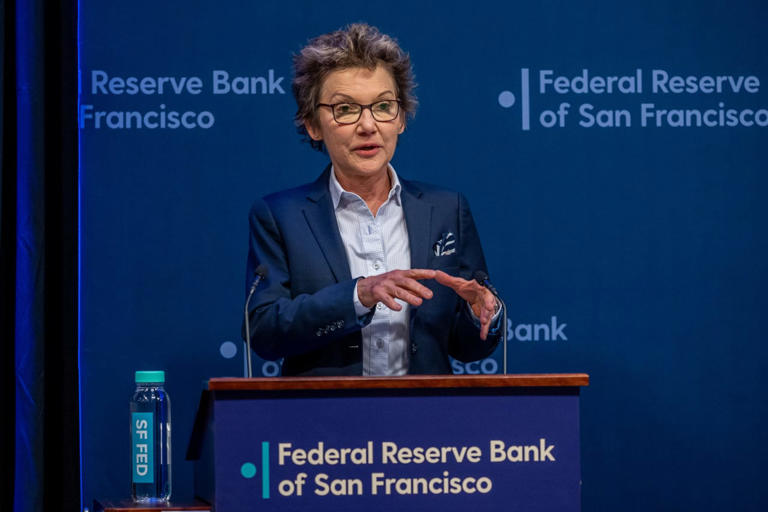San Francisco Federal Reserve President Mary Daly recently provided insights into the current economic conditions and the Federal Reserve’s approach to monetary policy amid ongoing challenges related to inflation and the labor market. As a voting member of the Federal Open Market Committee (FOMC), Daly’s views hold significant weight in shaping the Fed’s policy decisions.
Assessment of Inflation Trends:
Daly noted the trajectory of inflation, which peaked above 7% in 2022 but has since moderated to below 3% by the end of 2023, as measured by the personal consumption expenditures (PCE) price index. However, she emphasized the recent volatility in inflation data, which complicates the assessment of whether the economy is firmly on track towards sustainable price stability.
The decrease in inflation during the latter part of 2023 was largely attributed to improvements in supply chains and an expansion in the labor force. These factors contributed to easing price pressures as production and employment conditions improved following disruptions caused by the COVID-19 pandemic. Looking ahead into 2024, Daly anticipates that the Federal Reserve’s previous series of interest rate hikes will gradually exert downward pressure on demand, thereby contributing further to a slowdown in inflation.
Challenges and Economic Outlook:
Daly highlighted several challenges expected to influence the economic landscape going forward. While supply chains have largely recovered from pandemic-related disruptions, Daly expressed caution about the potential limited scope for further supply-side improvements to mitigate inflation. Similarly, the U.S. labor force participation rate has nearly returned to pre-pandemic levels, suggesting that future reductions in inflation will depend more on subdued demand growth rather than enhanced supply dynamics.
In terms of the labor market, Daly observed that despite the recent increase in the unemployment rate, job creation has remained robust. However, there has been a significant decline in job openings, signaling a potential shift where employers may start reducing actual job creation rather than just leaving positions unfilled.
Monetary Policy Considerations:
The Federal Reserve has maintained the target range for the federal funds rate at 5.25% to 5.50% since July 2023. Despite market expectations and interest rate futures suggesting a probability of rate cuts in the near term, Daly emphasized that any decision would hinge on incoming economic data and the evolving balance between inflation control and achieving full employment. This cautious approach underscores the Fed’s commitment to adjusting monetary policy as needed to support sustainable economic growth while ensuring price stability.
Conclusion and Policy Guidance:
In conclusion, Daly underscored the Federal Reserve’s dual mandate of maintaining stable prices and promoting maximum employment. As economic uncertainties persist, particularly regarding inflation dynamics and the labor market’s response to policy measures, the Fed remains vigilant. Daly emphasized that the Fed will continue to monitor economic developments closely, using incoming data to inform future policy decisions effectively.
Overall, Daly’s remarks highlight the complexities facing the U.S. economy as it navigates through a phase of transition from pandemic-driven disruptions to a more stable economic environment. The Federal Reserve’s role in balancing these dual objectives—price stability and full employment—remains crucial in supporting sustained economic recovery and resilience.
